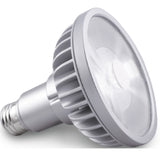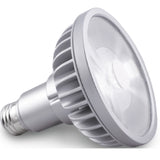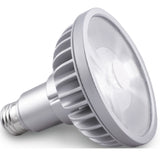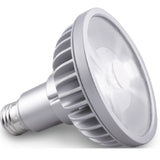LED Downlight Retrofit: Questions to Ask Before You Buy
Posted by Dave on for ProLampSales

One of the most common light fixtures found in both commercial and residential applications is the ceiling recessed downlight.
The clean, smooth ceiling look of recessed downlights makes them popular in office entryways, lobbies, hallways and conference rooms. In homes, recessed downlights are common in kitchens and are often found in rooms throughout the house.
Realizing the significant potential for both energy and maintenance cost savings, manufacturers have developed a large range of LED retrofit kits that either use the existing downlight housing or the existing ceiling cutout.
Anatomy of a Downlight

Traditional recessed downlights (image above) consist of (1) a housing (often called a “can”) with a lamp socket or wire leads; (2) a reflector that fits into the housing and includes a trim that provides the finished connection to the ceiling surface; (3) a light source - most commonly an incandescent, halogen, compact fluorescent lamp and in some commercial or industrial applications a metal halide lamp.

Installation of an LED retrofit kit into an existing housing is relatively simple (1) remove the reflector, trim and light source from the existing downlight housing, then (2) screw in the base on the end of the wiring pigtail to the existing socket in the housing or hardwire to the line voltage, finally (3) insert the LED unit into the housing so the trim is flush to the ceiling surface.
Questions that Need Answers Before a Purchase

Use the spec sheet of the LED retrofit unit to determine if that model matches the metrics you determine from the questions below.
Question 1: How satisfied are you with the illumination being provided by the existing downlight?
Is there to much light, not enough light, or it’s just right? Compare the LED lumen output or the LED equivalent wattage provided by the manufacturer to get the correct lighting level.
Is the appearance of the light (warm white or cool white or very cool white) about right?
Use the color temperature specification for each downlight to adjust or keep the same. 2700K = warm white, 3000K - 3500K = white light similar to halogen, 4000K = bright white, 5000K = very bright white.
Question 2: What is the brand and model of the existing downlight housing?
Manufacturers provide lists of compatible housings. Consult this list to make sure the LED downlight you buy will fit the housing.
Question 3: What is the aperture (inside diameter of the reflector at it’s widest point) of the existing downlight reflector?
Available apertures: 2”, 4”, 5”, 6” (often shown as 5”/6”), 8” and 10”.
Question 4: What is the voltage for your application?
Typically LED downlights are available in 120V, 120-277V and 347V. Obviously, you need a downlight that works with your required voltage.
Question 5: What is the wattage of the existing light source - incandescent, halogen, CFL, or metal halide?
When you know the type light source and the wattage of that light source you can determine the wattage of the LED retrofit. Knowing the lumen output of the existing downlights is another option. With either of these metrics you can narrow your search to LED retrofits that will provide equivalent light output.
Question 6: Is there a standard socket to screw in the LED downlight or does it need to be hard-wired to the line voltage?
Question 7: Is the existing dimmer (if already installed) compatible with the LED downlight?
If the existing downlight is incandescent or halogen, the dimmer is likely “phase-cut”. If the existing downlight is CFL the existing dimmer is likely 0-10V dimming. If you want to use the existing dimmer it must by the right type of dimmer and compatible with LED.
Question 8: Does the existing downlight have special features such as an adjustable gimbal? How important are these features? Are they available in LED?
Answers to these question will guide you to the optimal LED downlight retrofit for your application.
Featured Products (View All)
- 0 Comments
- Posted in Fixtures, LED
0 Comments




